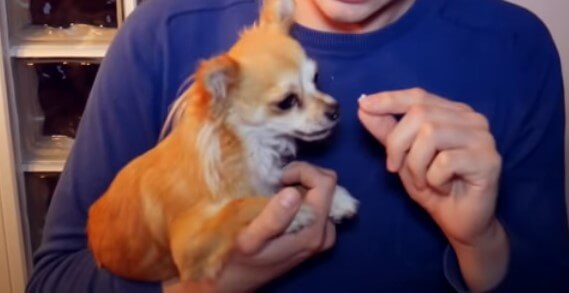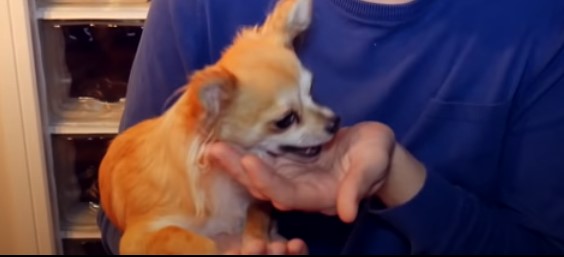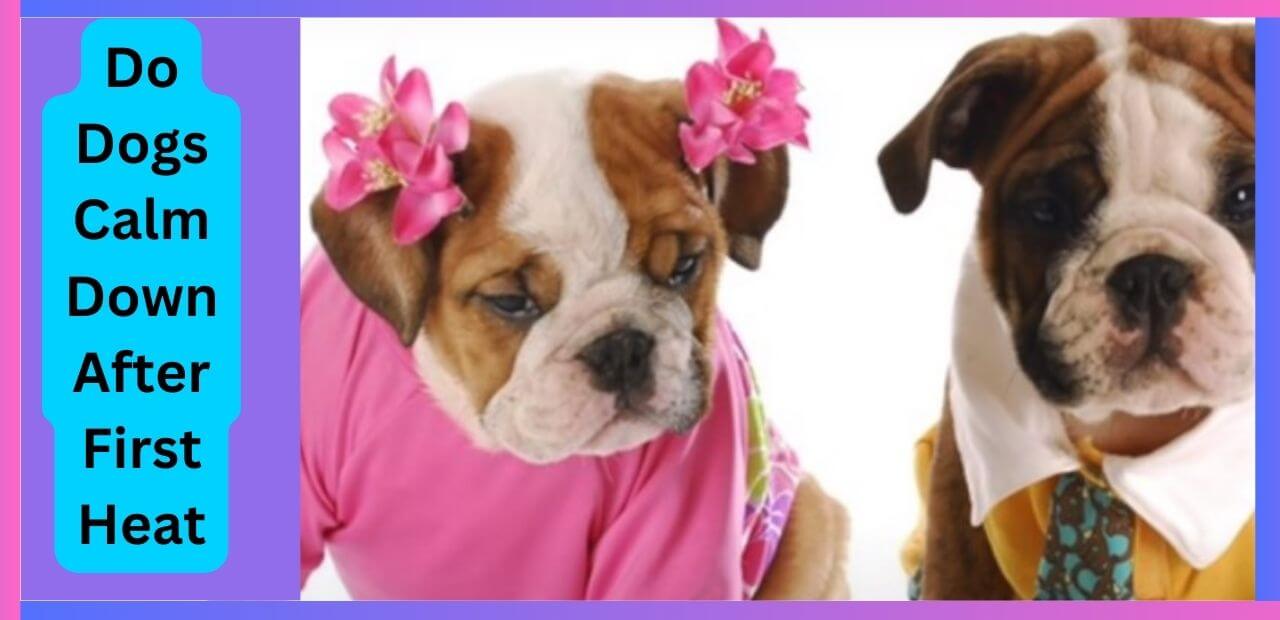Dogs usually calm down after their first heat cycle. During this time, they may exhibit signs of restlessness, increased energy, and behavior changes, but these usually subside once the heat cycle is over.
This is a normal hormonal phase for female dogs, and once it passes, they return to their usual behavior patterns. It’s important to note that every dog is different, and individual variations may occur in terms of the duration of these changes.
However, most dogs do experience a decrease in symptoms and return to their normal state after their first heat cycle.
Understanding The First Heat Cycle
Dogs may calm down after their first heat cycle, but it can vary depending on each individual dog. It is important to understand the changes in behavior and provide proper care and attention during this time.
The first heat cycle in dogs, also known as the estrous cycle, is an important milestone in a female dog’s life. During this time, her reproductive system undergoes significant changes as her body prepares for potential pregnancy. Understanding the first heat cycle can help dog owners navigate through this phase with ease and be better prepared for the changes their furry friend may experience.
What Is The First Heat Cycle In Dogs?
The first heat cycle marks the onset of sexual maturity in female dogs. It is a natural reproductive process that occurs in unsprayed female dogs typically between six and twelve months of age, but this can vary depending on the breed and individual dog.
The first heat cycle is characterized by hormonal changes and physical signs of readiness for breeding.

During the first heat cycle, the female dog’s reproductive organs, including the ovaries and uterus, undergo development and maturation. The start of the cycle is known as prestress, during which the female dog may show initial signs of being in heat.
Signs And Symptoms Of A Dog In Heat
A dog in heat displays various signs and symptoms that may indicate the onset of her first estrous cycle. Being aware of these signs can help dog owners identify when their furry friend is going through this phase. Some common signs of a dog in heat include:
- Swollen vulva: The female dog’s vulva may appear noticeably swollen during this time.
- Vaginal discharge: A bloody or straw-colored discharge from the vagina is often observed during the first heat cycle.
- Frequent urination: Dogs in heat may urinate more frequently than usual.
- Changes in behavior: Female dogs may become more restless, easily distracted, or exhibit changes in appetite and sleep patterns.
- Attracted to male dogs: Dogs in heat may show increased interest in male dogs, actively seeking their attention and attempting to mate.
It is important to note that the exact duration and intensity of these signs may vary from dog to dog.
Length Of The First Heat Cycle
The length of the first heat cycle in dogs can vary, but it typically lasts around 2 to 3 weeks. This phase is divided into different stages:
- Proestrus: This is the first stage of the heat cycle where the female dog’s reproductive organs start to prepare for potential mating. Proestrus can last around 7 to 10 days. During this stage, the dog may experience a swollen vulva and attract male dogs but will not be receptive to mating.
- Estrus: This is the second stage of the heat cycle and is characterized by the female dog’s receptivity to mating. It usually lasts for about 5 to 10 days. During this period, the vulva may still be swollen, but the discharge becomes a lighter color. Female dogs in estrus may display more intense behaviors to seek out male dogs for mating.
- Diestrus: This is the final stage of the heat cycle and generally lasts for 60 to 90 days. The female dog’s vulva returns to its normal size, and she is no longer receptive to mating. If mating has occurred, pregnancy may take place
Understanding the duration and stages of the first heat cycle can help dog owners better anticipate and manage their female dog’s behavior during this period. It is important to consult with a veterinarian for advice on spaying or further reproductive health considerations.
Behavioral Changes During The First Heat
During their first heat, dogs may exhibit behavioral changes such as increased restlessness, vocalization, and a tendency to seek attention.
Read Also: Can Dogs Have Sweet And Sour Sauce
While some dogs may calm down after their first heat, it is important to provide them with proper training and socialization to ensure their behavior remains balanced and manageable.
Do Dogs Calm Down After First Heat
The first heat cycle in female dogs, also known as estrus, can bring about various changes in a dog’s behavior. Understanding these behavioral changes can help dog owners better navigate this phase and provide the necessary care for their beloved pets.

In this section, we will delve into the effects of the first heat cycle on a dog’s behavior and discuss the hormonal changes that contribute to these changes.
Let’s explore what to expect during this significant time in your dog’s life.
How Does The First Heat Cycle Affect A Dog’s Behavior?
During the first heat cycle, dogs experience significant hormonal changes that can influence their behavior. These changes are necessary for the reproductive process and often bring about notable behavioral shifts in your furry companion. Here are some key points to consider:
- Hormonal changes and their impact on dogs’ temperament: A dog’s behavior is greatly influenced by hormonal fluctuations during the first heat cycle. These changes primarily involve the levels of estrogen and progesterone, which can lead to behavioral modifications such as increased restlessness, irritability, and decreased appetite.
- Common behavioral changes observed during this phase: The first heat cycle can have distinct effects on a dog’s behavior. Some commonly observed behavioral changes include:
- Increased vocalization: Your dog may become more vocal during the first heat cycle, often whining or barking more frequently due to heightened hormonal activity.
- Restlessness: Dogs in heat typically exhibit restlessness, pacing, and unable to settle in one place. This is a result of their instinctual drive to find a mate.
- Changes in appetite: It is not uncommon for dogs to experience changes in their eating habits. Some may exhibit a decrease in appetite, while others may develop an increased appetite.
- Increased affection or clinginess: Female dogs in heat may seek more attention and exhibit heightened affection towards their owners. They may also become more clingy and possessive.
- Changes in activity level: Dogs may either become more active and energetic or display a noticeable decrease in their usual activity levels during the first heat cycle. This variation can be attributed to individual differences in dogs’ responses to hormonal changes.
Understanding these behavioral changes during a dog’s first heat cycle can help pet owners provide appropriate care and support.

By being aware of these common changes, you can help your dog navigate this phase with comfort and ease. Keep in mind that every dog is unique, and their responses to the first heat cycle may vary.
Read Also: Can Dogs Eat Oatmeal Crème Pies
Patience and understanding are vital during this time, ensuring you meet their needs while they experience these natural hormonal changes.
Post-Heat Behavior: Do Dogs Calm Down
Dogs tend to calm down after their first heat cycle. Hormonal changes during heat can cause restlessness and hyperactivity, but once it passes, dogs typically return to their normal behavior.
Exploring The Truth Behind Dogs Calming Down After The First Heat
After going through their first heat cycle, many pet owners wonder whether their furry companions will calm down or exhibit any behavioral changes. Understanding the post-heat behavior of dogs can help manage and maintain their calmness effectively. Let’s explore the factors that influence these behavioral changes and learn some useful tips for ensuring your dog’s peace of mind.
Factors Influencing Behavioral Changes After The Heat Cycle:
- Hormonal fluctuations: The hormonal changes during the heat cycle can affect a dog’s behavior. After the cycle, these hormones start to stabilize, leading to a potential calming effect on your pooch.
- Age: Younger dogs may have more pent-up energy during and after their first heat cycle. As they mature, they tend to calm down naturally. However, individual differences and other factors should also be considered.
- Exercise and mental stimulation: Regular exercise and mental stimulation play a vital role in managing a dog’s behavior post-heat. Adequate physical and mental activities can help channel their energy in positive ways and prevent restlessness.
- Socialization: Proper socialization, both during and after the heat cycle, allows dogs to adapt to different environments and experiences, promoting a balanced and calmer demeanor.
Tips For Managing And Maintaining Calmness In Dogs Post-Heat:
- Consistent routine: Establishing a consistent daily routine for feeding, walks, playtime, and rest helps dogs feel secure and reduces anxiety, promoting a more relaxed state.
- Positive reinforcement training: Positive reinforcement techniques, such as rewarding good behavior with treats or praise, can help shape desired behaviors and encourage a calmer disposition in dogs.
- Enrichment activities: Engage your dog in interactive toys, puzzles, and games that provide mental stimulation, preventing boredom and potentially disruptive behaviors.
- Relaxation techniques: Introduce your dog to relaxation techniques such as calming music or aromatherapy, creating a peaceful environment that aids in their relaxation.
- Patience and understanding: Understand that behavioral changes take time and vary from dog to dog. Be patient, provide a calm and supportive atmosphere, and seek professional advice if necessary.
Remember that each dog is unique, and their behavior can be influenced by various factors. By addressing these factors and implementing appropriate strategies, you can help your furry friend maintain a calm and contented state after their first heat cycle.
Frequently Asked Questions
When Do Dogs Calm Down After Their First Heat Cycle?
Dogs tend to calm down after their first heat cycle in about 2 to 3 weeks. This is because the hormonal changes during the heat cycle can affect their behavior and energy levels. After the cycle, they return to their regular temperament.
Why Are Dogs More Energetic During Their First Heat?
During a dog’s first heat, hormones fluctuate, leading to increased levels of energy. The hormonal changes can make them more restless, seeking attention, and exhibiting different behaviors. This increased energy is a normal part of the heat cycle and should subside once the cycle is over.
Can I Expect Behavioral Changes In Dogs After Their First Heat?
Yes, you may notice some behavioral changes in dogs after their first heat. These changes can include increased territorial behavior, more attention-seeking, or differences in their interactions with other animals. However, these changes are usually temporary and should level out as the hormonal effects of the heat cycle diminish.
Will My Dog’s Personality Change After Their First Heat?
While it is possible for a dog’s personality to change slightly after their first heat, it is not typically a drastic transformation. Any changes in personality are usually temporary and related to the hormonal fluctuations during the heat cycle. Your dog’s underlying temperament will largely remain the same.
Are There Any Long-Term Effects On Dogs After Their First Heat?
In general, there are no significant long-term effects on dogs after their first heat. Once the hormonal changes from the heat cycle stabilize, their behavior should return to normal. However, it is important to monitor their health and consult a veterinarian if you notice any unusual or persistent changes in their behavior.

Conclusion
It is evident that dogs undergo significant changes during their first heat cycle. While some may experience increased energy levels and restlessness, it is important to note that they eventually calm down afterwards. This calmness can be attributed to hormonal changes and the completion of the heat cycle.
As a dog owner, it is crucial to monitor their behavior during this time and provide appropriate care and attention. Ensuring they have a comfortable and stress-free environment, regular exercise, and a balanced diet can contribute to their overall well-being and help them calm down after their first heat.
Remember, every dog is unique, and their temperament may vary. Consulting with a veterinarian is always recommended to address any concerns or specific needs during this stage.
By understanding and supporting our furry companions through their reproductive maturation, we can help them transition smoothly into their adult lives.
- Smelly House Because of Dog? Take These Hygiene Tips - May 20, 2025
- How to Introduce a Dog To a Cats Without Chaos - May 6, 2025
- 4 Best Cavapoo Rescues in the UK 2024 - April 5, 2024








